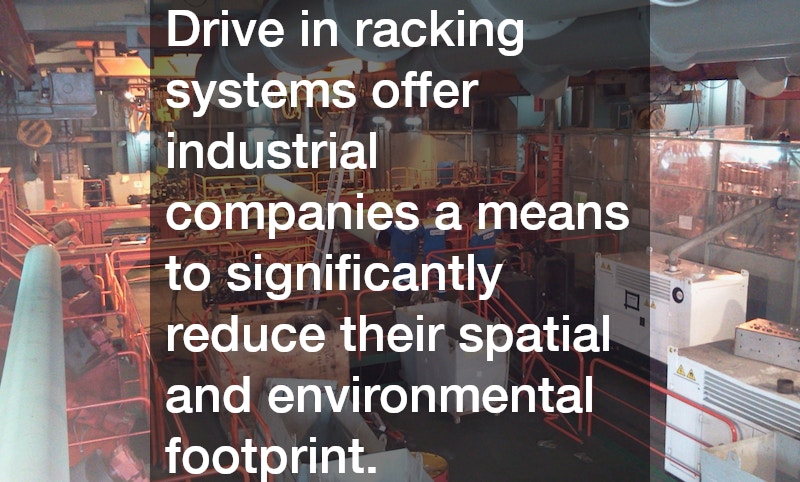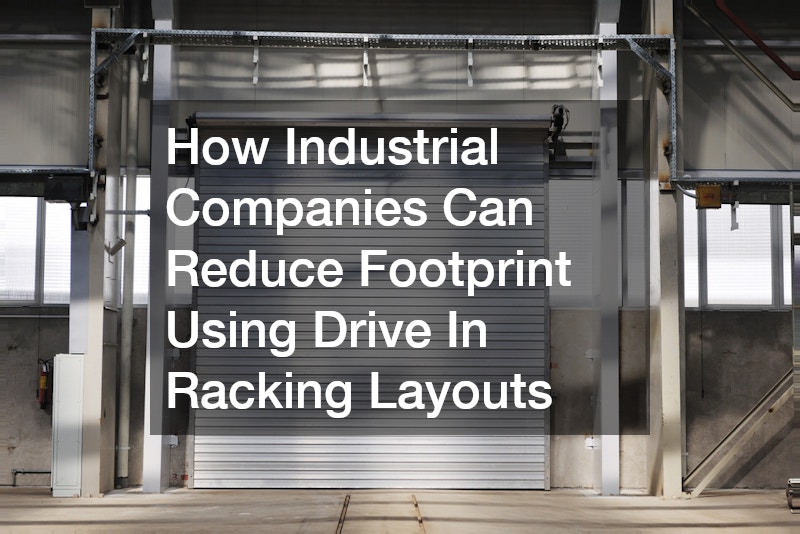
Industrial companies are often faced with the challenge of optimizing space and efficiency while minimizing their environmental footprint. As businesses grow, the need to store increased quantities of raw materials and finished products becomes inevitable. One innovative solution that addresses these storage concerns is the implementation of drive in racking systems. This article explores how drive in racking layouts can help companies reduce their footprint by optimizing storage capabilities and providing several operational and environmental benefits.
By thoroughly understanding these systems, industrial firms can move towards more sustainable, space-efficient operations.
Understanding Drive In Racking Systems
Drive in racking systems are a type of storage solution designed to maximize space by allowing forklifts to drive directly into the racking structure. This system involves the placement of pallets on rails that run along the depth of the racking area, thereby eliminating the need for aisles. Due to their robust and dense storage design, these systems are particularly useful in environments where high-density storage is required. For industrial companies, drive in racking systems offer a strategic way to store goods without sacrificing significant amounts of floor space. This form of storage can significantly reduce a company’s physical footprint while maintaining high storage efficiency.
The biggest advantage of drive in racking systems is their ability to enable first in, last out (FILO) storage management. This characteristic is important for companies dealing with non-perishable goods and items with a long shelf life. By optimizing the use of vertical and horizontal space, drive in racking systems help maximize a warehouse’s storage capacity, leading to effective space utilization. Not only do they increase storage efficiency, but they also streamline operational processes by reducing the travel time and distance for materials handling equipment. Consequently, drive in racking systems contribute to the overall reduction of an industrial company’s environmental footprint.
Reducing Space and Environmental Footprint
Drive in racking systems play a crucial role in reducing a warehouse’s spatial footprint by leveraging height instead of width for storage purposes. As companies strive to minimize space costs, transitioning to a drive in layout can provide significant space savings. This method is particularly beneficial in urban settings, where property costs can be prohibitively high. By using available vertical space to its fullest extent, companies can lower their real estate expenses and allocate resources to other areas of their business. Furthermore, this spatial strategy aligns with green building requirements, promoting an environmentally-friendly approach to industrial storage.
In addition to space optimization, drive in racking systems contribute to reducing a company’s carbon footprint by minimizing the need for excessive material handling. Since the system is designed to operate with fewer forklifts and reduced travel distances, it directly cuts down on fuel consumption and emissions. Lowering operational energy demands leads to significant environmental benefits, making drive in racking systems an appealing option for eco-conscious companies. By focusing on energy efficiency and sustainable practices, industrial firms can achieve a balance between operational needs and ecological responsibility.
Implementing Drive In Racking for Optimal Efficiency
To achieve optimal efficiency with drive in racking systems, companies must first conduct a thorough analysis of their operational needs. Factors such as product turnover rates, pallet sizes, and forklift accessibility must be considered to tailor a system that best suits specific storage demands. Careful planning and design are crucial to ensure that the drive in racking layout seamlessly integrates into existing workflows. Collaboration with experienced storage solution providers can help companies develop a strategic plan that addresses current needs while anticipating future growth and changes. By investing in a well-designed drive in racking system, firms can enjoy long-term benefits in storage efficiency and cost reduction.
Once implemented, regular maintenance and inspection are essential to ensure the ongoing safety and performance of the drive in racking system. Routine checks help identify potential issues like structural wear or misalignment of rails, which could compromise the system’s integrity and efficiency. Proactive maintenance also extends the lifespan of the racking system, maximizing return on investment for industrial companies. To further enhance efficiency, staff training should be provided to ensure that personnel are well-equipped to work with the drive in setup. Proper training minimizes operational disruptions and ensures that safety protocols are adhered to at all times.
Drive in racking systems offer industrial companies a means to significantly reduce their spatial and environmental footprint while enhancing storage efficiency. By maximizing the use of vertical space and streamlining warehouse operations, these systems provide a strategic solution to the modern challenges of industrial storage. The integration of drive in racking layouts enables companies to meet operational demands while aligning with sustainability goals. As industries continue to prioritize space optimization and environmental responsibility, the adoption of drive in racking systems can serve as a powerful tool in driving transformation. By understanding and implementing these storage solutions, industrial companies can future-proof their operations and contribute positively to the environment.




